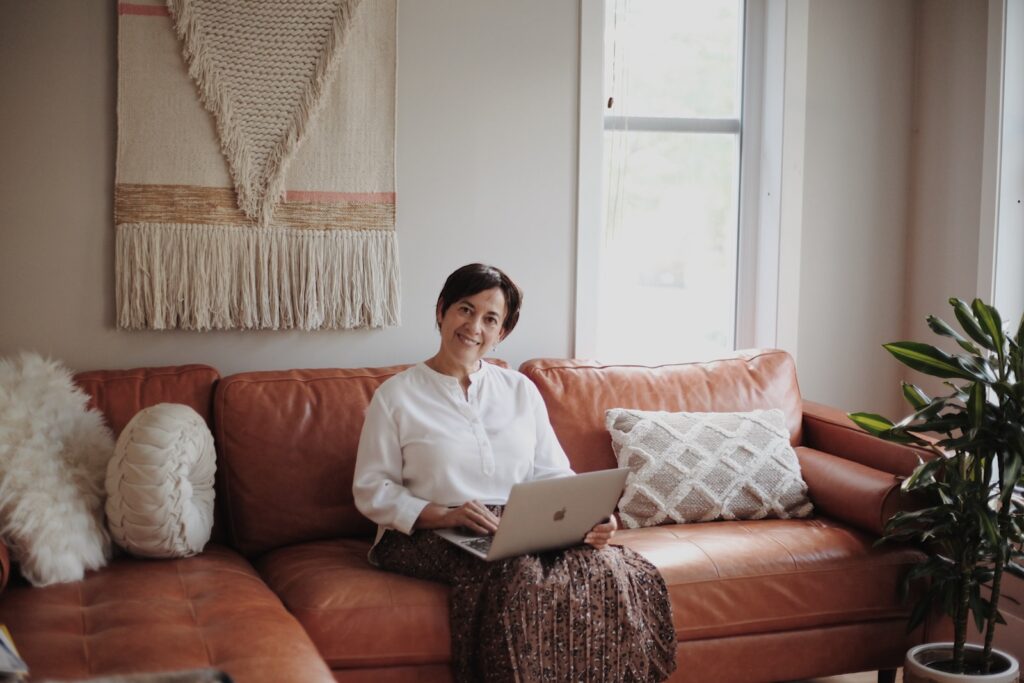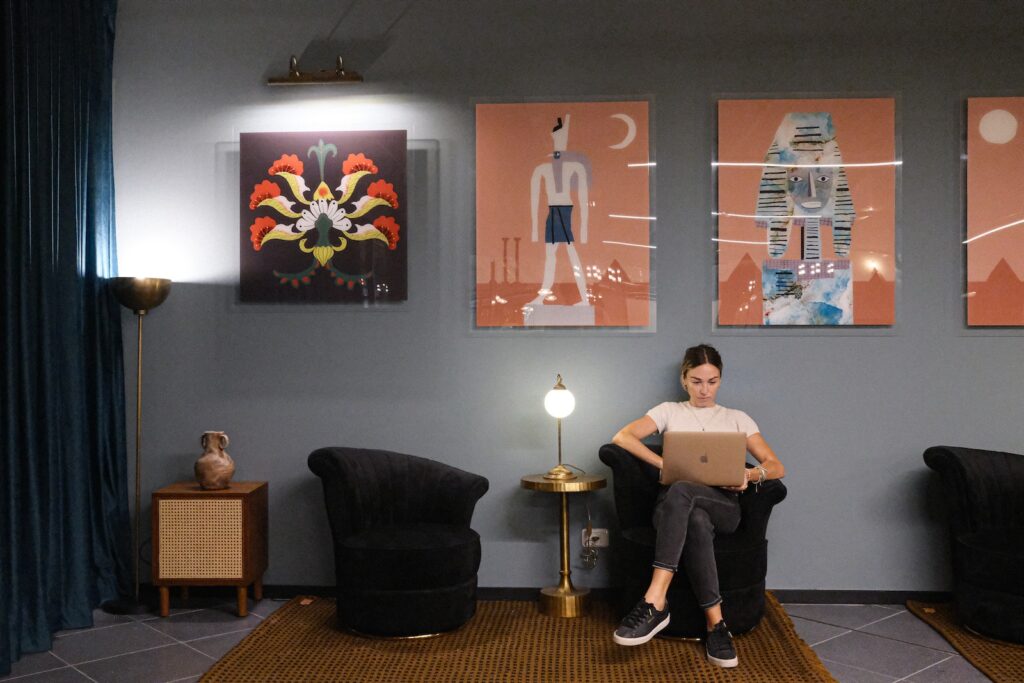When it comes to designing a space, choosing the right color palette can make all the difference in creating a cohesive and visually appealing environment. However, with so many colors to choose from, it can be overwhelming to determine which hues will work best together. That’s where minimalism comes into play.
As a minimalist color palette expert, I believe that less is more when it comes to selecting colors for your space. By limiting yourself to just a few carefully chosen shades, you can create a simple yet impactful design scheme that stands the test of time.
In this article, we’ll explore some key considerations for choosing a minimalist color palette and how this approach can help you achieve an elegant and functional space.
The Power Of Simplicity In Design

Minimalism is more than just a design trend, it’s a lifestyle philosophy that emphasizes simplicity and functionality.
When applied to color palettes, minimalism can create a powerful impact through the use of monochromatic schemes. These schemes explore different shades and tones within a single color, creating depth and interest without overwhelming the senses.
The psychology of color in minimalism plays an important role in creating a harmonious environment. Neutral colors such as white, gray, and beige are often used in minimalist designs because they evoke feelings of calmness and tranquility.
By limiting the number of colors used in a design, we reduce visual clutter and allow the eye to focus on what’s truly important.
Exploring monochromatic schemes allows us to create a cohesive design that feels intentional and purposeful. By using variations of one color, we can add depth to our designs while maintaining simplicity.
Minimalist color palettes may seem basic at first glance, but when executed correctly they have the power to transform any space into a calming oasis of serenity.
Understanding Color Theory

Hey there, it’s great to talk color theory!
When it comes to a minimalist color palette, hues are the basis of the colors you choose.
Shades are variations of the hue, while tints are the lightest version of the color.
Picking the right hues, shades, and tints in a color palette is key to creating a cohesive aesthetic.
Take your time exploring different combinations to find the perfect balance.
With a bit of experimentation, you’ll be able to craft your own minimalist color palette in no time.
Hues
Imagine a world where simplicity reigns supreme. A place where less is more and minimalism is the mantra. In this world, color does not exist just for the sake of it but has meaning and purpose.
This is the realm of minimalist color palettes, where hues are carefully chosen to convey a particular mood or evoke specific emotions.
Exploring monochromatic palettes is an excellent way to create a minimalist color scheme that still packs a punch. By using shades and tints of one hue, you can achieve depth and contrast without introducing too much complexity. Mixing warm and cool tones within your chosen monochromatic palette adds interest and keeps things from becoming too dull or flat.
When selecting colors for a minimalist palette, remember that less is often more. Too many hues can detract from the overall effect you’re trying to achieve. Instead, focus on choosing just two or three colors that complement each other well and work together towards your desired result.
With careful consideration of hue, value, saturation, and temperature in mind, creating a stunning minimalist color palette becomes effortless.
Shades
Now that we’ve discussed the power of monochromatic palettes in minimalist color schemes, let’s dive deeper into the world of shades. Neutral shades are an excellent starting point for any minimalist palette as they provide a timeless and classic foundation. By incorporating subtle variations of white, cream, beige or grey, you can create depth and interest without introducing too much distraction.
However, when working with neutral shades alone, it is essential to add bold accents to avoid creating a bland or uninspiring design. Striking a balance between neutrals and accents is key to achieving a successful minimalist look. Consider using pops of bright color such as red or yellow sparingly but strategically to enhance your chosen hues’ impact.
When choosing warm or cool shades for your minimalist design, think about the mood and emotions you want to evoke. Warm tones like oranges and yellows are associated with energy, happiness and warmth while cooler blues and greens tend to have calming, soothing effects on viewers. Experiment with different combinations until you find what works best for your specific project.
Remember that simplicity should always be at the forefront of your mind when crafting a minimalist color scheme. Keep your choices limited yet impactful by carefully selecting just two or three colors that work together harmoniously towards achieving your desired result.
With these guidelines in mind, creating a stunning minimalist palette becomes effortless.
Tints
As a minimalist color palette expert, it’s important to understand the power of tints.
Tints are created by adding white to any given hue, resulting in lighter and softer shades.
Neutral tints such as off-white or light grey can add depth and interest without being too distracting. They work well as a base for any minimalist design.
On the other hand, bold tints can be used sparingly to create impact and draw attention to specific areas of your design.
Bright pinks or oranges can add vibrancy while pastel blues or greens exude calmness and tranquility.
When using bold tints, remember that less is more – incorporating too many may result in a cluttered look.
When choosing which tints to use in your minimalist color scheme, start with one neutral tint as the foundation and then slowly incorporate bolder variations until you achieve the desired effect.
Don’t be afraid to experiment with different combinations until you find what works best for your project.
Remember that simplicity is key when it comes to creating an impactful minimalist palette that will stand the test of time.
Identifying Your Color Preferences

Understanding color theory is like learning the language of colors. Just as words are made up of letters, colors are composed of hues. And just as how certain combinations of letters create different meanings and emotions in a sentence, so can the blending of different colors affect our mood and perception.
When it comes to choosing a minimalist color palette, exploring hues may seem overwhelming at first. But by identifying your personal preferences, you can personalize shades that reflect your style and personality.
Perhaps you’re drawn to cool tones like blues and greens for their calming effect, or warm yellows and oranges for their energy-boosting qualities.
By limiting yourself to only a few carefully selected colors, each shade becomes more significant and impactful within your design. A minimalist color palette allows for simplicity and clarity while still creating depth through subtle variations in tone and texture.
Personalizing these shades ensures that your design remains unique and authentic to you without sacrificing its minimalistic aesthetic.
Narrowing Down Your Color Choices

Color psychology and symbolism play a significant role in choosing the right color palette for your minimalist design. It is essential to understand how colors can affect emotions, behavior, and mood. Certain colors evoke specific feelings and associations that you should consider when selecting your minimalist color scheme.
One way to narrow down your choices is by exploring monochromatic schemes or complementary pairs. Monochromatic schemes use different shades of one hue, creating a harmonious and cohesive look. Complementary pairs involve using two opposite colors on the color wheel, which creates contrast and visual interest.
By limiting yourself to these options, you’ll have an easier time narrowing down your choices and achieving a clean aesthetic.
When making final decisions about your color palette, remember to keep it simple. Avoid overcomplicating things with too many hues or patterns – simplicity is key in minimalist design. Stick to no more than three main colors in your palette to create a balanced composition without being overwhelming.
Ultimately, choose what speaks to you while keeping in mind the principles of minimalism: less is always more.
Creating Contrast And Balance

A color palette that is too uniform can be bland and uninspiring. It’s important to create contrast and balance in your design to make it interesting and dynamic.
Using complementary colors is a great way to achieve this. Complementary colors are pairs of colors that sit opposite each other on the color wheel, such as blue and orange or red and green. When used together, they create an intense contrast that draws the eye.
However, using complementary colors doesn’t mean you have to abandon your minimalist aesthetic – simply choose muted shades or tints for a more subdued effect.
Playing with shades and tints is another effective way to add depth and interest to your color scheme without adding more hues. For example, if your main color is white, try incorporating different shades of gray or ivory for a subtle yet impactful effect.
Remember, minimalism isn’t just about using fewer colors – it’s also about creating harmony through thoughtful composition.
Incorporating Textures And Patterns

As we move forward from discussing how to create contrast and balance in your color palette, let’s delve into the world of textures and patterns.
Mixing materials is a great way to add depth and interest without overwhelming your minimalist approach. By incorporating different textiles such as linen, wool, or leather, you can create an understated yet compelling look.
Additionally, playing with layering can elevate your design while still maintaining simplicity. Consider adding a sheer curtain over a solid-colored window treatment or layering multiple rugs on top of each other for added texture. Remember that less is more when it comes to minimalism, so choose one or two key elements to layer rather than going too heavy-handed.
When it comes to incorporating patterns, keep it subtle by using geometric shapes or simple stripes. Avoid bold prints that may clash with your overall aesthetic. Instead, focus on creating visual interest through the use of varying textures and layering techniques.
With these tips in mind, you can confidently incorporate textures and patterns while staying true to your minimalist color palette style.
Bringing Your Minimalist Color Palette To Life

The theory of minimalism in branding states that less is more when it comes to design, and this principle applies to color palettes as well.
A minimalist color palette can make a strong impact by using only a few carefully selected colors. The key is to choose colors that evoke the right emotions and reflect your brand’s personality.
Color psychology plays a significant role in minimalism. Certain colors have specific meanings, so it’s essential to choose wisely. For example, blue represents trust, stability, and professionalism, making it an ideal choice for corporate brands. On the other hand, yellow evokes optimism and creativity, which could work well for a youthful or artistic brand.
To bring your minimalist color palette to life, follow these simple tips:
- Use white space effectively: Minimalist designs rely heavily on negative space to create balance and harmony.
- Experiment with shades and tones: You don’t need many colors to create depth and interest; different shades of one hue can achieve the same effect.
- Consider texture: Texture adds dimensionality without adding extra colors. Think about incorporating textures like wood grain or concrete into your designs.
Incorporating a minimalist color palette into your branding strategy requires careful thought and consideration. By choosing colors that align with your brand’s values and personality while taking into account color psychology principles, you can create an elegant yet impactful visual identity for your business.
Final Thoughts
So there you have it, my fellow minimalist color palette enthusiasts.
By following the steps outlined above, you can create a stunningly simple yet powerful design that truly speaks to your unique style and preferences.
But remember, choosing a minimalist color palette is not just about selecting a few colors and calling it a day.
It’s about understanding the theory behind color, identifying what resonates with you personally, and then bringing those choices to life through careful consideration of contrast, balance, textures, and patterns.
In short, creating a minimalist color palette requires both artistry and intentionality.
So take your time, experiment with different combinations, and trust in your own creative instincts.
The end result will be worth it – I promise.

